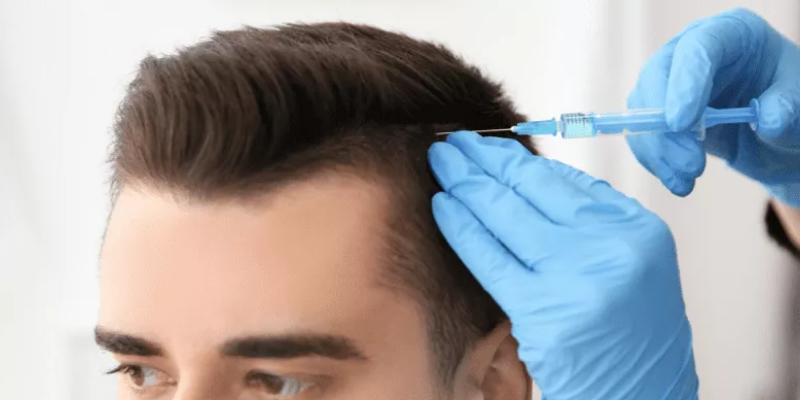Body Hair Transplant Review
Body hair transplant review is a popular cosmetic procedure nowadays. Hair loss, which may occur for many causes after youth, can cause psychological distress. Permanent hair loss may be caused by genetics, hormonal imbalances, stress, infections, or medication usage. Hair transplantation is becoming the most permanent therapy for baldness. Many individuals choose hair transplantation procedures since they are quick, leave no traces, and the transplanted hair is permanent. It’s common to have questions after deciding on a hair transplant. In order to ensure a successful hair transplant, a series of tests and analyses are conducted. As a consequence of these investigations, the location and quantity of grafts to be harvested and planted are both identified. The new hairline that should emerge after the transplanting procedure is drawn by the plastic surgeon doing the procedure. In hair transplantation, local anesthetic or sedative anesthesia is used.
This procedure may be made as comfortable as possible by using anesthetic prior to transplanting your hair. FUE is the most often used procedure for hair transplants nowadays. The FUE method of hair transplantation does not need any incisions to be made during the procedure. The hair transplant procedure leaves no visible scars as a result. The donor area for hair grafts is the initial stage in hair transplantation. The optimal donor locations for hair transplantation are the nape and the region behind the ears. Special micromotor devices are used to remove hair follicles.
These high-quality grafts are preserving in a specific solution. A skill plastic surgeon will do the procedure step by step, placing each organ in its proper location once it has been harvesting. The natural angle and orientation of hair follicles should take into consideration while planting grafts. Hair transplantation is able to provide the most natural-looking results this way.
Body Hair Transplant Review Facts
Hair transplantation is an option for those with thinning or balding hair owing to genetics, hormone disorders, stress, environmental causes, and accidents. A person undergoing a hair transplant must possess the requisite amount of grafts. The term “kose” refers to a group of persons who are born with no hair on their head. There may not be enough grafts in the head region to do hair transplantation. Hair follicles from different regions of the body, such as the neck, back, chest, and genital area, may transplant in this scenario.
An additional level of attention is requiring in the areas of donor and transplantation during the hair transplant procedure. For the first three days after hair transplantation, you should stay at home and safeguard your head from any potential harm. Your hair will be red and crusty for the first 15 days following the procedure. Within 15 days, the crusts on your hands will fall off on their own. Your doctor has prescribed a strategy for dealing with crusts if they don’t come off.
For the first 15 days after surgery, you must wear a helmet. You’ll shielding from the sun’s damaging UV rays, rain, wind, and dust using this method. Avoid going to the gym, swimming, or taking a bath for the first month after your hair transplant. As a result, you’ll be able to avoid any inflammation or other negative effects on the transplanted location. After hair transplantation, you may offer the vitamins, minerals, and amino acids necessary for the growth of hair follicles with a few sessions of PRP therapy. In this approach, your transplanted hair will both grow quicker and seem more natural.
Body Hair Transplant Review Result
Hair loss and crust shedding are common side effects after a hair transplant. The “Shock shedding period” begins in the second week after the hair transplant procedure and lasts for around a month. There is no losing of transplanted hair follicles during the shock shedding period. The Shock shedding period must under finish in order to open the region in which the newly planting hair follicles will develop. After the second month, the hair loss slows to a halt, and by the third month, it has totally ceasing.
Typically, the first hair follicles appear in the third month after a hair transplant, following the Shock shedding period. The earliest hairs are feeble and sparse in appearance. Hair starts to thicken and get stronger during the sixth month. Almost 80% of the transplanted hair follicles will have grown one year following the procedure. After the first year, the hair will be thick, healthy, and seem completely normal.
The cost of a hair transplant may vary widely, depending on the clinic where it is performing, the plastic surgeon doing it, and the amount of grafts being transplant in total. Hospitals should equipp with cutting-edge technology and operating rooms should sterile. There must a professional in the area of plastic surgery or hair transplantation who is well-verse in hair transplantation techniques and uses the most up-to-date technologies. Besides the plastic surgeon, the hair transplant team should also well-verse in hair transplantation. A hair transplant’s cost depends on the amount and quality of grafts used during the procedure, as well as the development of the region to transplant. Following a hair transplant, the cost of staying in the hospital for surveillance will rise.
Body Hair Transplant Review Process
Men, in particular, live in fear of hair thinning and loss. People spend a lot of time and effort on their looks since it is so important in today’s society and in interpersonal relationships. When it comes to aesthetics, hair takes center stage. People’s self-esteem and mental health might suffer when they experience hair loss or baldness.
Hair loss may now treat effectively thanks to advances in medicine and technology. Hair transplantation is a procedure in which hair follicles that are resistant to shedding are removing from the back of the patient’s head and transplanting to the patient’s neck, legs, arms, chest, and genital regions. Using the patient’s own hair follicles, which are very resistant and nearly never shed, the transplanting hair is make of the patient’s own hair. Sapphire hair transplantation, together with cutting-edge technology, has become one of the most popular ways of FUE hair transplanting in recent years.
Hair Transplantation Turkey vs. US Differences
The differences between hair transplantation Turkey vs. US can be summed up in terms of cost, quality of service, and availability. In general, hair transplant procedures are far more affordable in Turkey, but this does not necessarily mean that you should expect poorer quality results. On the contrary, many patients report excellent outcomes from experienced surgeons in both countries. Additionally, there is a wider range of options available to patients in the US due to its larger population and greater resources for treatment. Ultimately, it is important for individuals to choose the procedure that works best for them based on their financial situation and desired outcome.

Researching both countries thoroughly can help patients make an informed decision about which hair transplant procedure is right for them. When making a decision about hair transplantation procedures, it is also important to consider other factors such as post-operative care. When considering undergoing a hair transplantation Turkey vs. US, it is important to keep quality of care top of mind; research prospective clinics thoroughly to ensure you get the best possible outcome from your procedure. If you are looking for an affordable way to restore your hairline, then comparing these two countries might be worth exploring.



